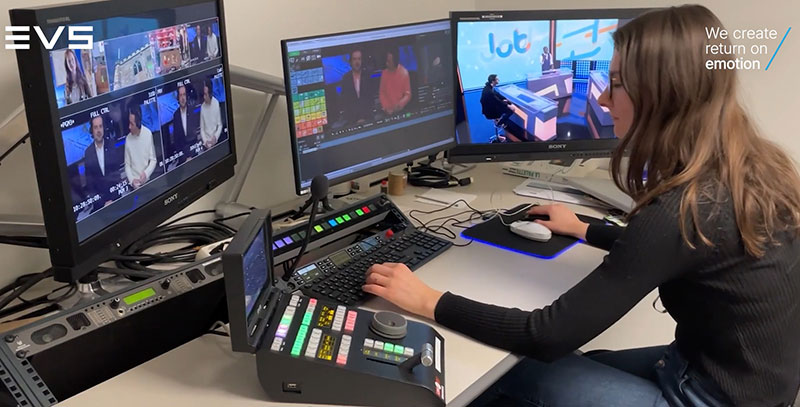CANAL+ Group implemented an IP-based infrastructure at its new CANAL+ ONE HQ as part of a company-wide transformation, including EVS Cerebrum broadcast control and monitoring.

CANAL+ Group has implemented an IP-based infrastructure at its new CANAL+ ONE headquarters in Paris as a major part of the company’s transformation plan, aiming to reposition themselves as an international company. Three members of the Group’s technical staff talk here about these changes at Canal+, and how they have approached the need to update their production and distribution infrastructures.
Ralph Atlan, Content CTO, Operations and Executive Producer at Canal+, said that the move to the new HQ marked the culmination of a transformation plan that has lasted over three years. “Up until now, we have mainly focussed on providing content and services for subscribers,” he said. “The move helped finalise the whole transformation process, allowing us on one hand to adopt new IP and cloud systems that until now weren’t mature enough to address the needs of our audio-visual activities, and on the other, to support our development and international growth.”
The deployment incorporates EVS' LiveCeption, MediaCeption and MediaInfra systems, with the EVS Cerebrum broadcast control and monitoring system acting as a catalyst toward centralising and optimising the Group's broadcast operations.
Engineering and Media Projects Director Charles Lesoli said that the company’s entire process, from the reception of the signal to the production of the channel, had been completely transformed. He said, “Using new technologies based on IP, we deployed Cerebrum in each of the three parts of this project – connectivity, production, distribution – to drive the different IP signals, passing through EVS Neuron gateways. Furthermore, to support production, we built on infrastructure based on XT-VIA servers.”

Canal+ Broadcast Imagineer Pierre Maillat noted the distributed nature of the new infrastructure. “What gives us a logical, operational vision here are the three different Cerebrum elements we have set up at ONE – for distribution, connectivity and production, allowing us to give operators the view they want. In terms of distribution, it’s about routing 2110 signals and, at the same time, creating a layer of abstraction for manual operations. Connectivity is used for managing the increasing number of formats, and the necessary processing operations for receiving and distributing these formats.
“For production, there are two main functions,” Pierre said. “The first is to manage the configurations in the control rooms and routing of different signals. The second is the collective management of the different processes, as well as managing the pool of XT-VIA servers and distributing them more easily between the different control rooms.”
According to Charles, Cerebrum has allowed the teams to bring multiple configuration and opertional tools into a single GUI. “Making this change will allow us to preconfigure and recall different configurations in each control room and, ultimately, to simplify the operation of the same control room in different situations – that’s for the production part,” he said.
“For distribution, it allows us to be completely channel agnostic, regardless of the underlying technical complexity that may exist for each production channel, and have a unified operating tool for all channels. We believe in the simplicity of Cerebrum as a universal control for an IP system that can sometimes seem very complex, but which in the end, is no more complicated than a traditional grid when used through the Cerebrum client. We were very pleased to explore these new opportunities with our long term partner, EVS.” evs.com




